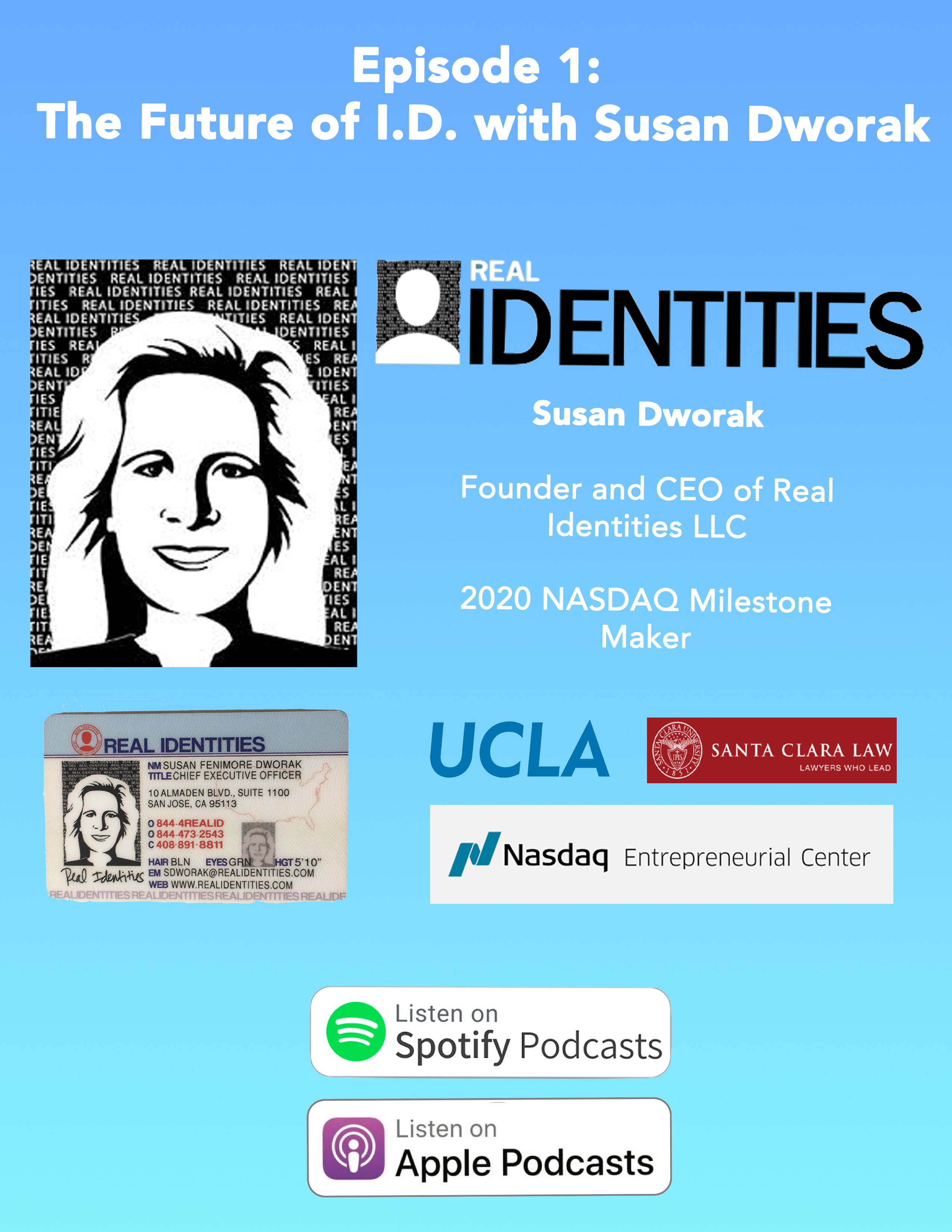 Commentary
CommentaryThis article is adapted from “Our Future: Looking Beyond with Michael Sikand”, a podcast for young leaders that explores the key questions driving the future of business, technology, and policy.
In “Episode 1: The Future of I.D.”, Susan Dworak, Founder and CEO of Real Identities, discusses how her company has changed the way businesses and governments verify I.D.s and shares her thoughts on the future of identity. Listen to the full interview here.
When we consider how deeply technology has touched our everyday lives, it is surprising to think that it has not yet changed how we prove who we are. In an age where we unlock our smartphones with the press of a thumbprint or the flash of our face, we still use pieces of plastic with our picture on them to buy alcohol, board an airplane, or pick up a prescription.
While technology may very well make I.D. cards obsolete in the near future, Susan Dworak, founder and CEO of Real Identities, is determined to use technology to make our present identification system more secure. Her company has disrupted the way sprawling government agencies and large Fortune 500 companies verify driver’s licenses and I.D. cards. Discussing her company’s approach, Susan says:
“We built an app called ID.Training that helps people tell the difference between a real I.D. and a fake I.D., helping them comply with really complex laws related to identification. With nearly 1000 valid versions of I.D. in the United States. There’s no way your waiter or anybody can keep them all straight. We put them all together in one app.”
Dworak continues, “You present your I.D., the waiter taps on the state, taps on the version, and instantly gets access to a visual side-by-side of the real I.D. and a fake I.D.”
Fake I.D.s are notoriously easy to manufacture, with the materials used to make them by state agencies being commercially available in many cases. It has become increasingly popular for underage adults to purchase Fake I.D.s through online websites that accept cryptocurrencies like Bitcoin and encourage group-level ordering for discounts. In fact, some Chinese-based forgers boast over 10,000 orders a day for fake identification cards.
Its important to note that when people think about Fake I.D.s, they think of booze being bought for frat parties or cigarettes sold to youngsters at bodegas. The reality is however, that the easily forged nature of physical I.D. cards enable crimes on a much higher level than underage drinking.
“Terrorism, human trafficking, domestic violence. There are a lot of really serious crimes that happen around this country and all over the world by the use of fake I.D.s that could not happen without them.” Dworak said. “The Las Vegas shooter, the Oklahoma City bomber, the 9/11 terrorists, all of those crimes were committed with the use of fake I.D.”
Despite the inadequacies of current identification forms, innovation promises new ways in which to more securely verify identity. Some states have greenlit testing for mobile driver’s licenses, which would see people reach for their smartphones instead of wallets when asked by a bartender or airline representative to provide proof of identity. Their digital nature, however, makes them even more susceptible to forgery and manipulation, a risk which has slowed their introduction and limited current applications to only internal use at a few government agencies.
The most highly-anticipated identity innovations, however, lie under the futuristic umbrella of biometrics. Take for example how CLEAR machines in airports have built-in sensors to collect both thumbprint and iris scans. Each human’s unique biological characteristics allows for a much more secure level of identification, especially when multiple indicators are combined.
“For example, you might get your phone. Use your fingerprint to open your phone. You go to your banking app and the bank recognizes your face and they say, ‘okay, now speak.’ They want to combine facial recognition with voice recognition.” Dworak said. “We’re also looking at biometrics like walking. You can actually identify somebody by their gait.”
While biometrics have a much lower margin of error in proving identity than plastic cards, and can also provide higher levels of verification speed and convenience when travelling through an airport or entering a sports stadium, privacy concerns are also key to the conversation.
In a world where data is the currency above all else, allowing companies and governments to collect your biological signatures could be considered somewhat troubling. Further, the perceived “foolproof” nature of this technology could make for tough court cases when individuals have their biometric data hacked and used maliciously.
“Everything is hackable and fingerprints can be hacked. Irises can be hacked. Interestingly, retinas are the only things that have not been hacked. Giving up security for convenience is a really dangerous proposition,” Dworak said.
While a world where goods and services are accessed through retinal scans and gestural identification is far off in the future, its not hard to imagine how such systems could drastically reduce identity-related crimes. Nevertheless, it’s fascinating to see companies like Real Identities use technology to fix the flaws inherent to the status quo.
Michael Sikand is pursuing his Bachelors in Business Administration from the University of Michigan – Stephen M. Ross School of Business, and just launched an entrepreneurship podcast “Our Future: Looking Beyond with Michael Sikand”. He is fascinated by the intersection of business, technology, and policy.
Suggested citation: Michael Sikand, The Future of Identity, JURIST – Student Commentary, May 7, 2020, https://www.jurist.org/commentary/2020/05/michael-sikand-future-of-id/
This article was prepared for publication by Tim Zubizarreta, JURIST’s Managing Editor. Please direct any questions or comments to him at commentary@jurist.org

